Now for the ‘Part 2’ – and about latest developments in this air war.
To understand the following, one needs to know the ‘basics’. The basics in this air war (and any other) is the situational awareness. Have explained this already several times, but – for new-comers here – that’s the knowledge about your own and the enemy’s capabilities, positions, and intentions.
The situational awareness is based on two factors - sensors and data fusion - and I’ve explained the ‘basics’ of these already several times. Thus, for their easier orientation, especially new-comers on this blog might want to check earlier features like, Assault Mode Part, 1, Assault Mode Part 2, Assault Mode Part 3, Assault Mode Part 4, Assault Mode Part 5 and Assault Mode Part 6, plus the series Saints, Thunders & Lightnings Part 1, Saints, Thunders & Lightnings Part 2, Saints, Thunders & Lightnings Part 3, and Saints, Thunders & Lightnings Part 4….. (thinking of it, considering what is to follow, you might want to go on with Know thy Enemy and few others, especially Mobutu Syndrome Part 3 and Mobutu Syndrome Part 4…)
This time, I’ll go a ‘level lower’: from the situational awareness and data-fusion through the creation of integrated air defence systems (IADS’), to operations of surface-to-air missiles (SAMs), and then: radar-homing SAMs (or ‘heavy SAMs’).
***
For the start let me remind you that when talking about sensors, most people instantly think about radars. And, sure, radars are important. However, in modern air war – and for reasons explained in the feature ‘Assault Mode, Part 3’, back in May – ‘other sensors’ are meanwhile even more important.
The reason is that effect I’ve described as, ‘hand-held lamp on a darkened (football?) stadium by night’: essentially, the mass of radars (especially those with long detection ranges) is emitting so much electromagnetic energy, and intelligence gathering (ELINT) -systems are meanwhile so advanced, that anybody powering up a radar is instantly revealing the position and the type of that radar. As ironic as this might sound, even if powering up a radar is ‘promising’ to improve the situational awareness (for example: because the radar might detect an enemy aircraft or missile) this is, actually, uncertain: there’s no guarantee the radar is going to detect anything at all. But, it’s 100% certain to reveal own position to the enemy ELINT-gathering systems in turn resulting in a situation where it’s actually decreasing own, and improving the enemy’s situational awareness.
How comes?
Regardless how advanced, radars remain susceptible to proper handling (or mishandling) by their operators, to atmospheric conditions, to topography and man-made obstacles, to the Earth’s curvature (because… damn, yes: the Earth is round!), and to the enemy electronic countermeasures. Above all, the mass of long-range radars are easy to detect – usually from around two times their maximum detection range.
In turn, thanks to modern ELINT-systems, the other side is near-100%-sure to know not only the position of the radar, but also its type, and thus its capabilities – including what it can detect, and what not.
This is why the majority of radars deployed by both sides in this war are ‘mobile’. Their mobility is something like ‘offering the promise of improved survivability’. Because, the more mobile they are – the more often they can be re-deployed from one to antoher point – the more likely are early warning/surveillance radars to survive (or at least to ‘live longer’).
Now, that with ‘mobile’ is actually ‘relative’. Except for those installed on ships or aicraft, I do not know about any radar system in service either in Russia or Ukraine that can literally ‘operate while moving’. Especially long-range radars (i.e. early warning/surveillance radars) are still big and complex pieces of machinery. Sure, many are installed on trucks or trailers, can be folded up/packed in a matter of 5-30 minutes, and re-deployed to another position. But, that’s the only reason why are they considered ‘mobile’: upon stopping, they have to be stabilised and aligned first, then calibrated (to recognise local topographic obstacles, like hills, for example), and only then can they be powered up. Above all: during any kind of ‘action’, they are fixed in position.
The same is valid for 99% of surface-to-air missile systems (SAMs): yes, sure, all those nowadays deployed by the Russian- and Ukrainian armed services are ‘mobile’, but, except for latest variants of the Russian-made Tor SAM-system (of which there’s perhaps a dozen in operational service) not one can ‘shoot while moving’. If for no other reasons then because guidance systems of their missiles need to know where they are (or, more precisely: where they are not) for their proper function.
As a result of all of this, plus because the Ukrainians have shot down two of precious Russian A-50 airborne early warning radars, both parties in this war are heavily reliant on ‘mobile’ early warning radars.
The next issue with these radars (except for their, actually, very limited ‘mobility’) are the topography, vegetation, and the Earth’s curvature. Essentially (and oversimplified) all three are ‘conspiring’ to severely limit the capability of radars to detect low-flying aircraft and/or missiles. Even if operated in perfectly flat terrain, because of Earth’s curvature, a radar installed at ‘ground level’ is going to be unable to detect targets flying low over a range beyond 45-50km away. Add hills, trees, tall buildings… and these are ‘blocking the radar’s view’ in specific directions, thus further reducing its maximum detection range for low-flying objects.
This is why both sides tend to position their ‘mobile’ radars atop of natural elevations – like hills – and why both sides are operating so-called ‘mast-mounted radars’. Systems like Podlet K1, in the case of the VKS, for example:
Sadly, there is no direct pendant to the Podlet in Ukraine: although the Pelikan might even be slightly better in detection and resolution (and especially its cooling, which is incredibly important considering all the heat produced by such systems), it lacks a mast-mounted version. This is why we get to see, time and again, the Russians using Iskander-Ms or Lancets to strike either 40V6M mast-mounted radars of PSU’s S-300-, or TRML-4D radars of Ukrainian IRIS-T SAM-systems. Because, especially closer to the frontline (say: less than 50 kilometres from it) the PSU has ‘nothing better’ to scan the low altitude over the battlefield, but such systems. In turn, this is exposing them to the Russian strikes.

Unsurprisingly, knocking out the ‘nearby mast-mounted radar’ – either by Russian Kh-31 anti-radar missiles, or by Iskanders, Lancets, or even Krasnopol guided artillery shells, or by AGM-88 HARMs fired by Ukrainian Su-27s, or by M142 HIMARS or M270 MLRS, or by attack UAVs, or by artillery shells – is one of first things done whenever there is any kind of ‘special’ operation planned by one or the other side.
The next action – usually undertaken after or around the same time one attacks the ‘nearby mast-mounted radar’ – is a direct strike at enemy SAM-systems. There are lots of ‘schools of thought’ for how this must be done, or is ‘properly done’, or ‘done in most effective fashion’, ’but’, meanwhile (after some ‘experimentation’ in 2022), in Russia and Ukraine this is actually rarely undertaken by aircraft. Instead, both sides prefer to ‘lob’ some Iskander-M, or Tochka-U, or ATACMs tactical ballistic missile at enemy SAMs. Because that’s simpler, safer, and saving lots of time, while – usually – offering a higher degree of success. Alternatively, and depending on availability, the PSU might deploy some of its Storm Shadow of SCALP-EG missiles for such purposes, while the Russians are meanwhile frequently deploying their Lancet attack-UAVs for such purposes.
In this regards there are following pros and cons: the majority of older systems are including one early warning/surveillance radar and one fire-control radar (or two fire-control radars, like in the case of the US-made MIM-23 HAWK, operated by the PSU). Means: usually, it’s ‘enough’ to knock out one, perhaps two radars, and the entire SAM-site is rendered non-operational. It can have 100+ missiles on its launchers, and 100+ reloads on hand, but can’t fire because it’s radars are non-operational.
This is why (on basis of combat experiences from Vietnam and the Middle East of the late 1960s and early 1970s), starting already with such ‘older’ Soviet-designed systems like Osa-AK/AKM (ASCC/NATO-reporting name ‘SA-8 Gecko’), and then the Buk, and then the S-300V (not to talk about more recent Tunguska, Tor, Pantsyr, etc.), fire-control radars were added to every single of their ‘mobile’ launchers. Thus came into being so-called ‘TELAR’: transporter-erector-launcher with radar.
Obviously, knocking out SAM-systems equipped with TELARs is ‘slightly’ more complex, because it requires near-simultaneous hits on both the early warning/surveillance radar, the fire-control radar, and TELARs – while the ever more advanced equipment of SAM-sites is enabling their ever more irregular deployment.
For example: during the Vietnam War, one of principal threats for the US air power over North Vietnam was the Soviet-made S-75 (ASCC/NATO-codename ‘SA-2 Guideline’) SAM-system. This was ‘simple’: one early warning radar, one fire-control radar (SRN-75, aka ‘Fan Song’ for Westerners), and six launchers. Knock out the SRN-75 and the entire SAM-site was useless. And, to make things even easier, the Soviets usually deployed them in so-called ‘star-fish’ pattern, which was easy to detect from the air.
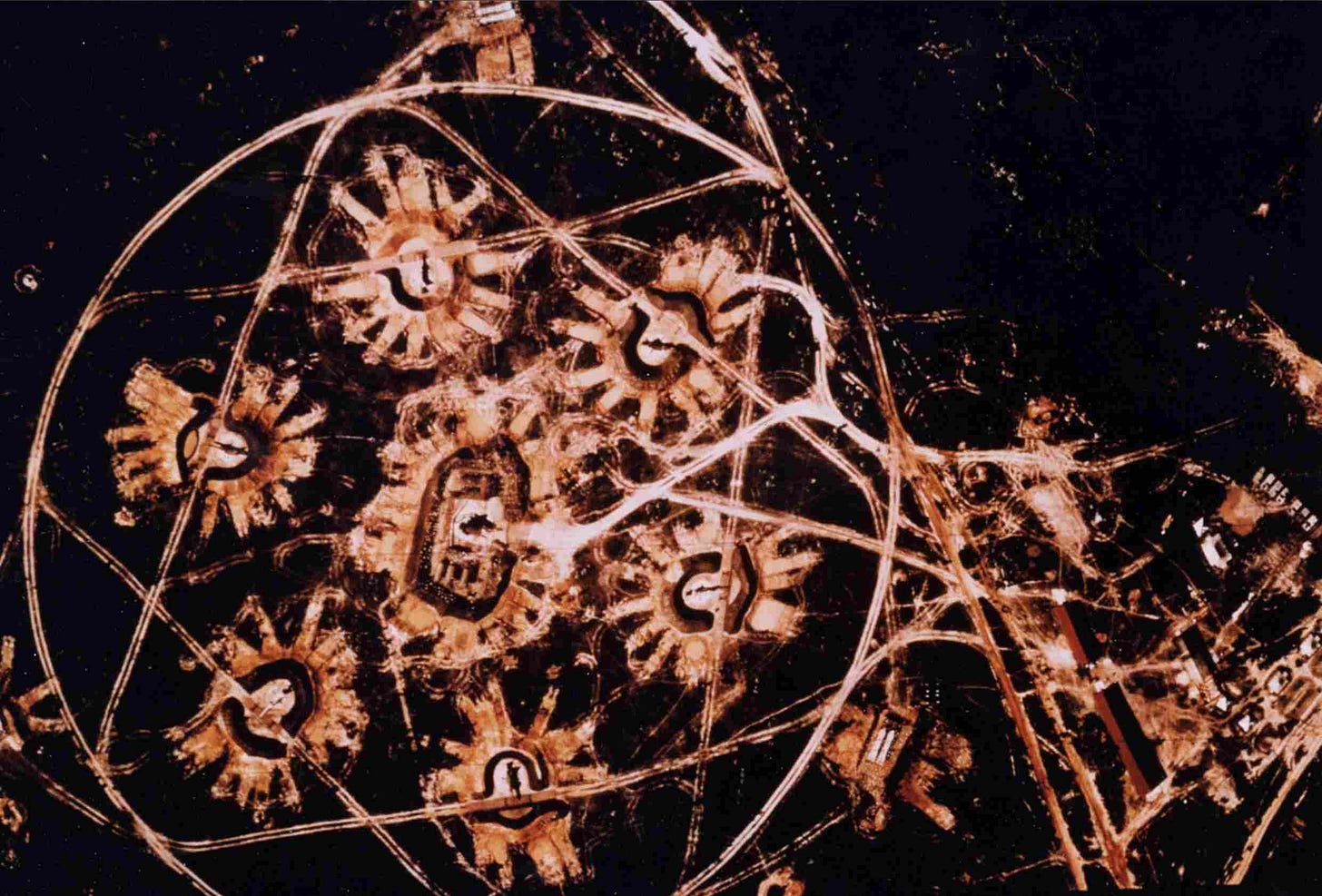
There’s nothing of that kind in service in this war. Even old Ukrainian (or ex-Polish) S-125 (‘SA-3 Goa’) are not deployed in similar fashion any more, and frequently have two or even three fire-control radars per one site.
Indeed, the most-widely used ‘heavy’ SAM-system in service by both sides is the Buk (‘SA-17 Grizzly’). A Buk M3 SAM-site (as operated by the VKS) has an early warning/surveillance radar, plus one fire-control radar on each of its four to six TELARs. Even the older Buk M1 (as operated by the PSU) has that early warning/surveillance radar, plus fire-control radars on at least two TELARs. Means: one can knock out the early warning/surveillance radar, and one of TELARs, but the site remains operational until all of its TELARs are dead.
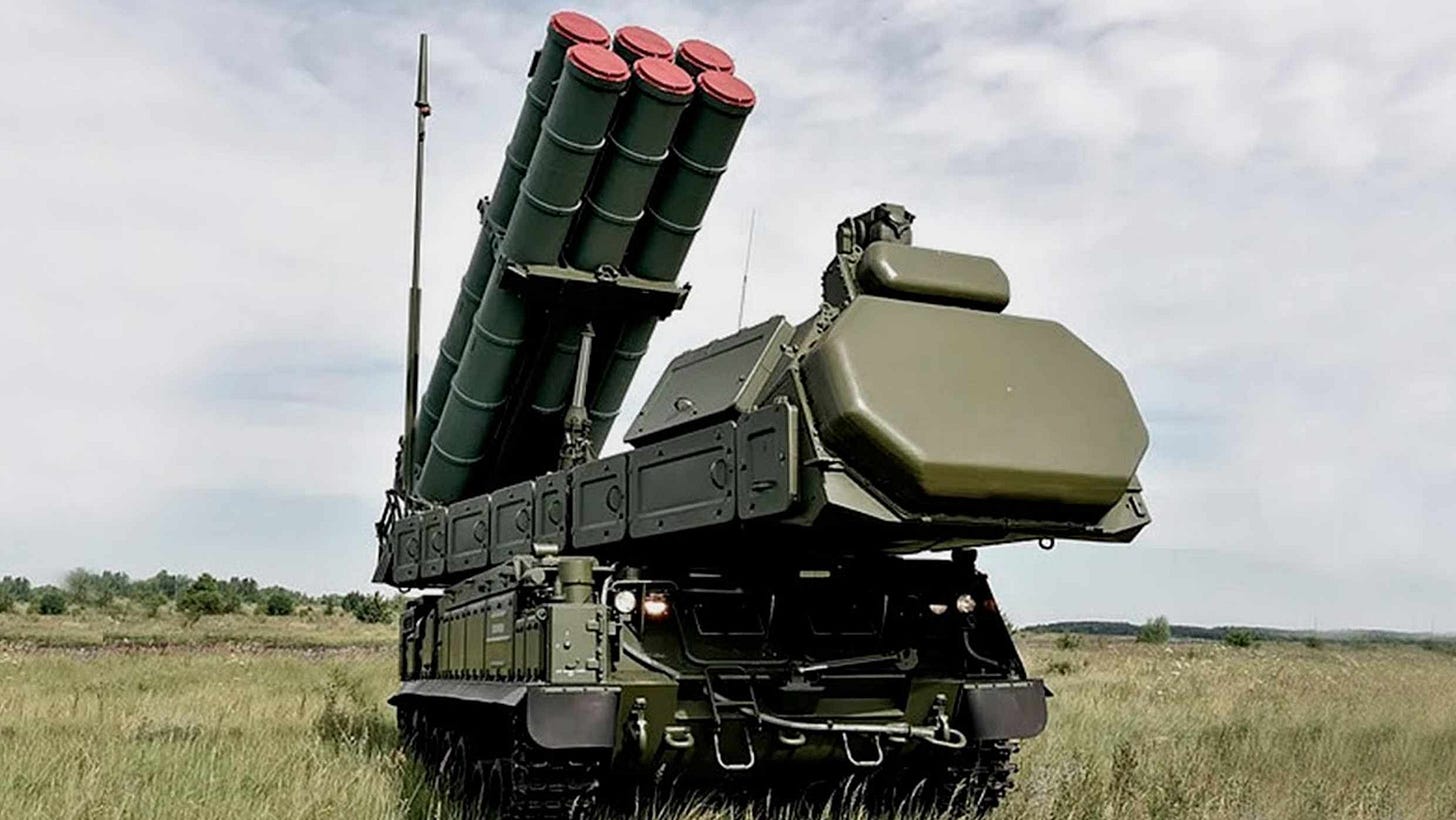
And to do so, one first has to find them first - because nobody is as dumb as to line up all the TELARs in front or behind the fire-control radar, or position them in a nice circle around it, anymore…
Another advantage of the addition of multiple fire-control radars is that (of course: also thanks to being supported by ever more advanced computers) they are enabling simultaneous engagement of an increasing number of targets. For example: while the old S-75 could only engage one target at time (and fire at it with single missiles from six different launchers), a Buk M1 SAM-site like deployed by the PSU (and regardless if still firing original missiles or RIM-7 Sea Sparrows/Aspide missiles) can simultaneously engage 3 or 4, guide three missiles at every of them, and simultaneously track 24 other targets. And it’s actually a relatively obsolete system, because stuff like PAC-2, PAC-3, or IRIS-T is 40 years more advanced.
***
That much about the ‘basics’. Now, lets see how is that applied in some of recent fighting.
The first – and, perhaps, the most obvious – campaign is the one Ukrainians are running against the Russians in the occupied Crimea, since late spring of 2023. Its original aim was to disable the integrated air defence system (IADS) of the 31st Air Defence Division, VKS.
At the start of the war, this included several radio-technical units (equipped with early warning/surveillance radars, electronic warfare systems, and communication systems), and five regiments operating S-400s and Buk M3s – all nicely protected by multiple Pantsyr short-range air defence systems (SHORAD) or ‘close-in weapons systems’ (CIWS).
Now, because - as Pudding’s PRBS-industrialists insist - ‘NATO is providing endless supply of latest arms and technology’ to Ukraine, in form of limited numbers of 30-40 years old MGM-140 ATACMs and different versions of rockets for M142 HIMARs, it took the Ukrainians about a dozen of major attacks and more than a year to demolish this IADS. They would knock out one S-400 SAM-site, to enable strikes on, for example, other targets in the Dzhankoi area, or in Sevastopol. Few days later, the Russians would replace wrecked equipment, re-boot their IADS, and this was up and running again. Then, few weeks later, Ukrainians would repeat the exercise… and the Russians would bring in re-placements and re-build their IADS ….eventually, over the last 14 months, Ukrainians have destroyed so much of the 31st Air Defence Division (including its very headquarters and the Fundament-M automatic tactical management system), and so many of replacements that the Russians were forced to withdraw all of their surviving air defence assets from Dzhankoi and from Sevastopol back to the Prymorskyi-Kerch area, and then to reinforce this with their sole operational S-500 SAM-system in order to protect the naval traffic over the Kerch Strait and the road/railway traffic over the Kerch Bridge. Because: they can withdraw their navy from Sevastopol to Novorossiysk, no problem: but, they can’t ‘withdraw’ the crucial linchpin in their logistics for the Crimea and VSRF troops in southern Kherson. They must keep these re-supplied via the bridge and via railway ferries.
The last week, Ukrainians have targeted one of S-300 SAM-sites precisely in that area again. In this fashion, and after (at least) 14 months of operations of this kind, they have literally ‘drilled a big corridor’ in the Russian IADS…. and then, early on 22 August, fired at least one R-360 Neptune ‘anti-ship’ missile: this hit the ferry Conro Trader (which barely survived two earlier attacks) as this was carrying 30 fuel cisterns. Set afire, the ship sunk at the pier: salvage operations are in the process, but even if the Russians clear the pier – right now they’ve got no ferries to replace this one, and it seems they do not trust themselves to move trains with fuel cisterns over the Kerch Bridge…
As if this was not enough, around the same time the Ukrainians have forced the VKS to create another ‘SAM-corridor’ further north - because it withdrew SAM-systems from there in order to bolster air defences in the Crimea - and run an UAV-strike on the Russian Federal Agency for State Reserves’ POL-dump in Proletarsk (in the Rostov-na-dne Oblast; pun intended): this caused such a conflagration that the fire went out of control and began eating the entire complex, before spreading into the town of Proletarsk.
To make things ‘better’, I guess, at 05.00hrs of 23 August, the Ukrainians hit the site again, aiming to blow up one of tanks containing kerosene… the last I’ve heard (early this morning), about 30+ out of 70+ tanks were afire, and the Russians gave up trying to extinguish the conflagration.
Also around the same time (i.e. also on the morning of 22 August), Ukrainians have exploited yet another ‘SAM-corridor’ drilled in the Russian IADS over the time to launch a major UAV-strike on the Marinovka AB, about 400km east of Sieverodonetsk and 70km west of Volgograd. On its own, Marinovka was nothing special. However, lately, it was the new home-base of the 559th Bomber Aviation Regiment’s three squadrons of Su-34s, plus some Su-24s. That unit was withdrawn there following earlier Ukrainian UAV strikes on Morozovsk AB.
Now, Pudding’s PRBS-industrialists have first explained that nothing was hit at Marinovka at all; then that all the aircraft were flown out in time etc… eventually, satellite photographs available since around 36 hours later have shown that this air base was throughoutly smashed. Maintenance facilities, a UMPK-assembly facility, the POL-dump and the ammunition dump were blown up, at least 2 Su-34s and 1 Su-24 destroyed, 2 Su-34s and 1 Su-24 at least damaged. Which is making this the most successful Ukrainian UAV-strike on any of Russian air bases… so far.
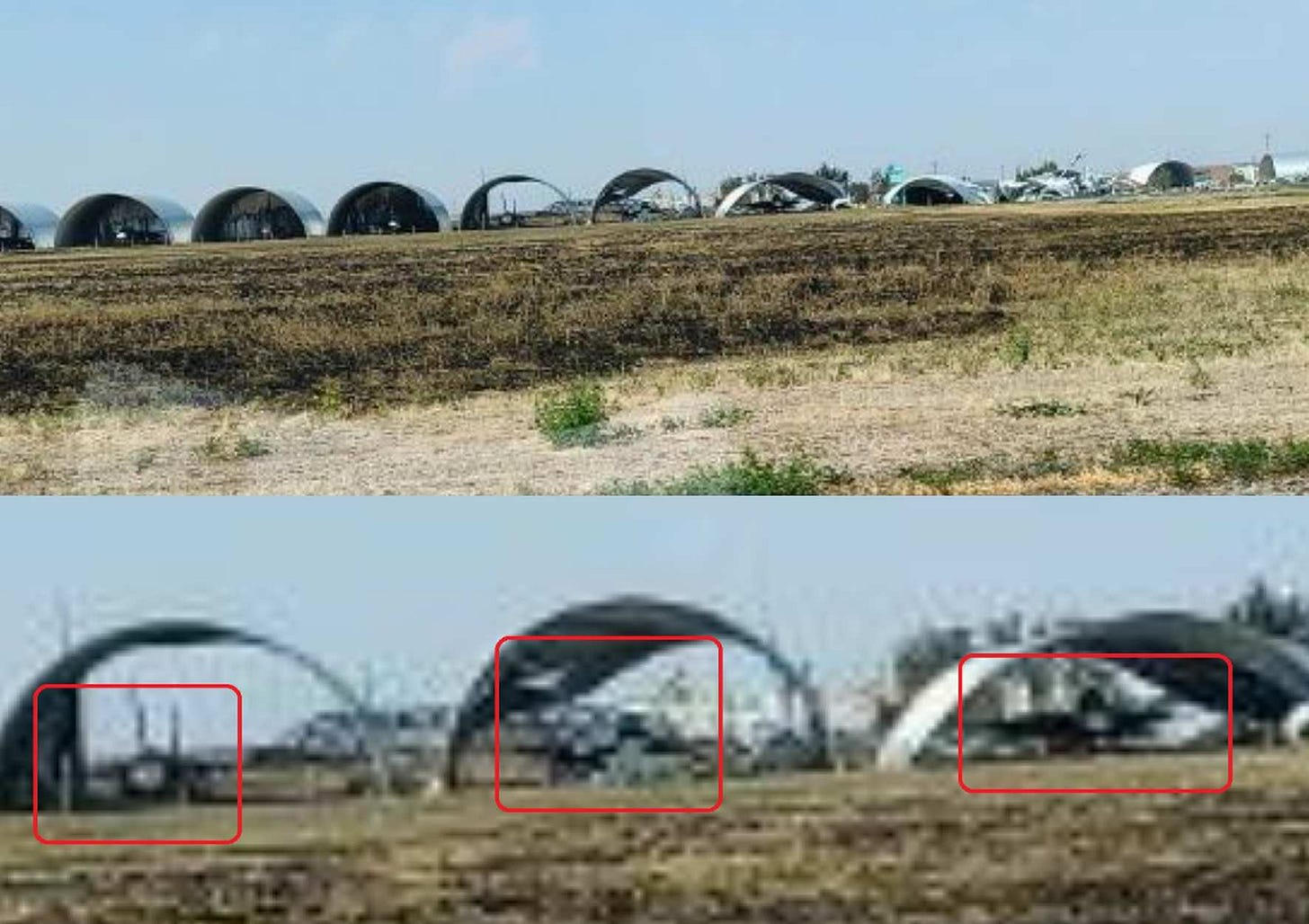
Finally, early this morning, Ukraine deployed its newest, Palyanytsia jet-powered attack UAV (can reach speeds of up to 400km/h) to hit and blow up an ammunition depot in the Voronezh region.
…. all of which is, actually, ‘nothing new’. Rather ‘cumulative effect’ of a systemic and sustained campaign of ‘drilling corridors’ into the Russian IADS. And, because the Russians simply can’t ‘print’ new S-400 SAM-systems, and the S-500 is delayed by years… it ‘simply had to happen’, sooner or later.
***
That much about ‘strategic- and operational-level’. As next I’m going to discuss the tactical level air warfare of the last few days (and weeks) - which is going to explain also why did I start this feature with so much discussion about radar-homing SAMs. Thus, ‘to be continued’…





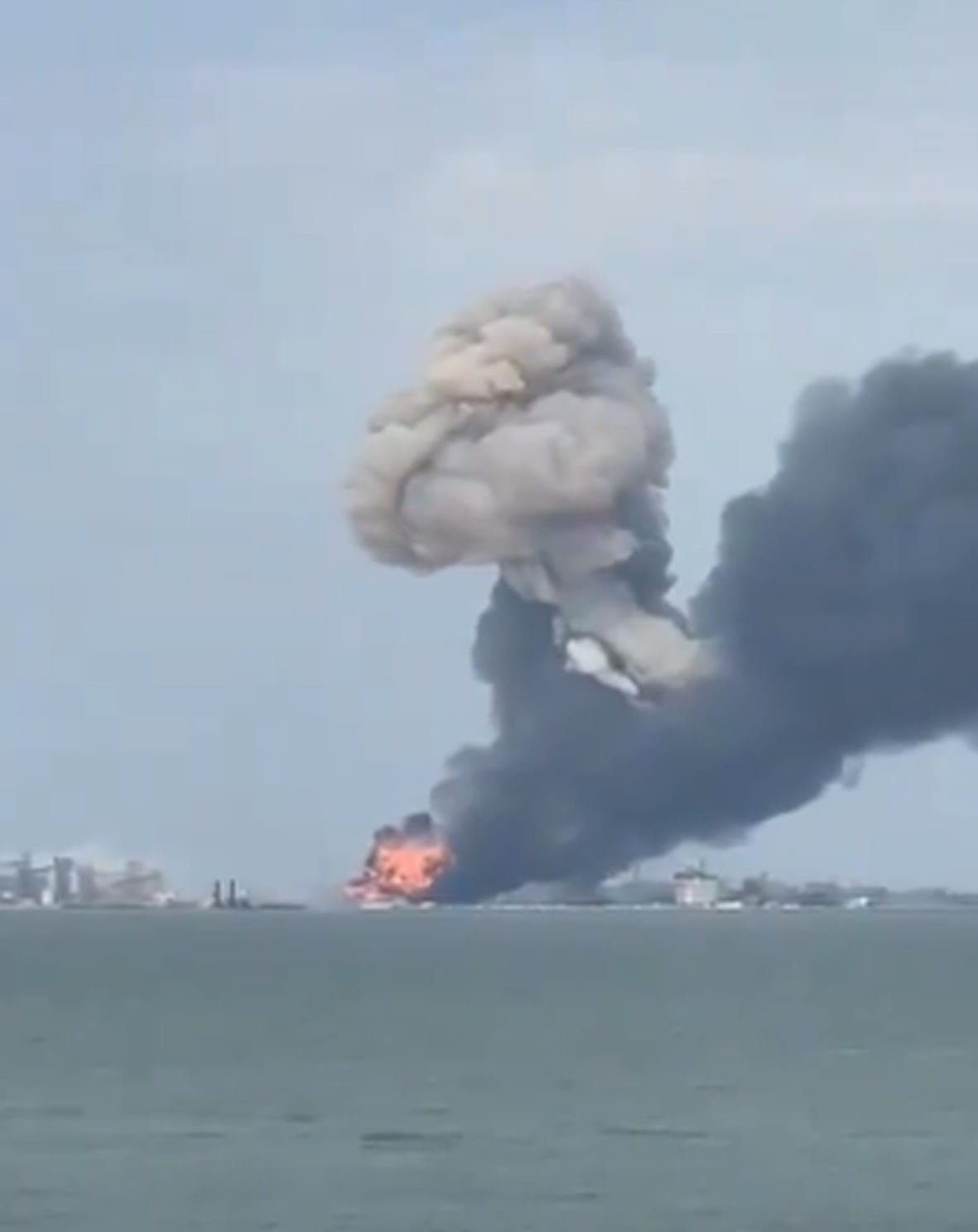

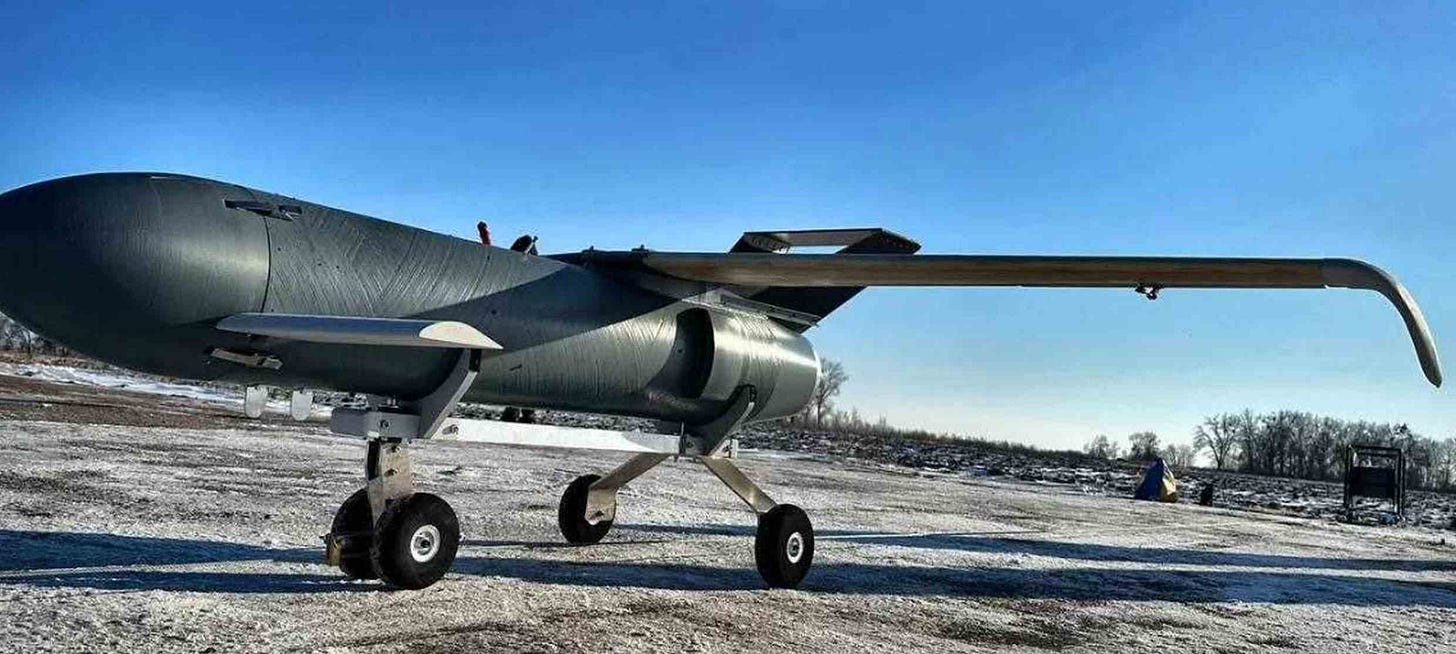
Thanks for the update. I have read most of the previous sections on air war fare referred to. I thought I understood them that time, clear and logical as they were. Maybe I Even did. But anyhow, thank you for the simplification and the repetition. Much needed. Looking forward to the next installation. But the very short story here seems to be that Ukraine is succesful in establishing corridors in the Russian air defense and is using that to hit Russia where it hurts. Excellent.
Tom, could you explain a bit the IFF situation? What systems do both sides use and how much do they rely on them? How do western SAMs and the F-16s fit into the Ukr IFF system?